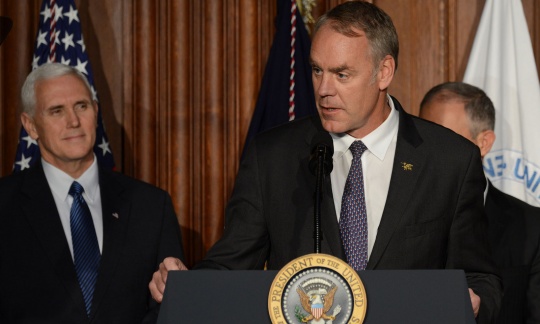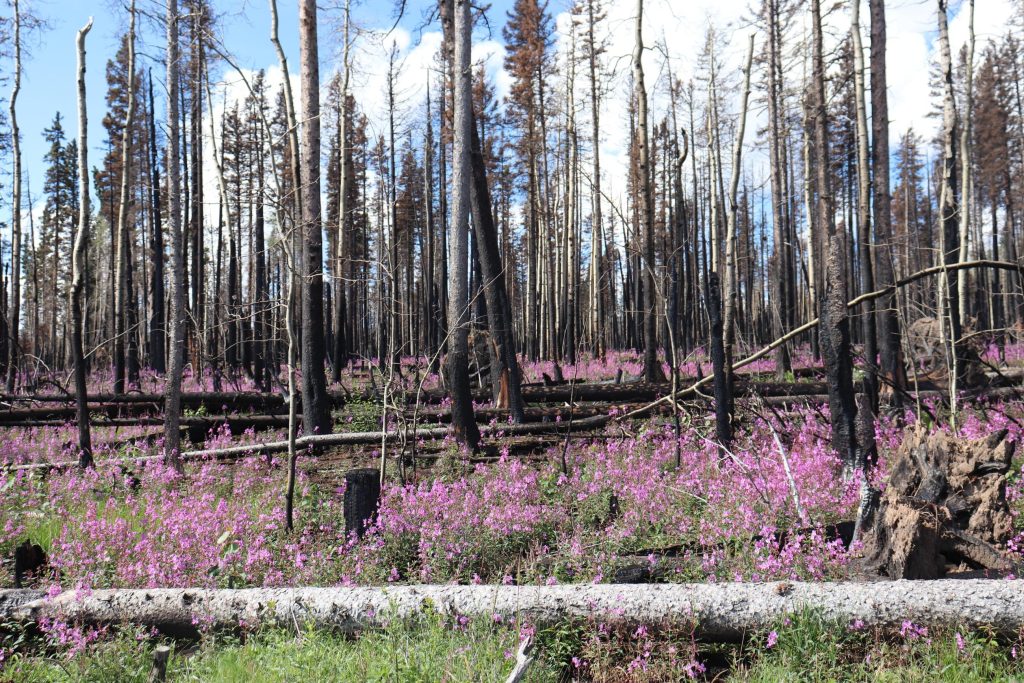Update: In an interview with the Associated Press on Feb. 23, Zinke said he is reconsidering aspects of his planned overhaul of the Interior Department. According to the report, Interior will be moving forward with a reorganization that adheres more closely to state boundaries, though some states will continue to be split. “Western Governors are gratified that the Department of Interior has responded to their previously-stated concerns and are moving towards a state boundary-oriented approach in the latest draft map of its unified regional boundaries,” said Jim Ogsbury, Executive Director of the Western Governors’ Association.
The Department of Interior employs around 70,000 people and oversees a broad array of federal programs, from land management agencies like the National Park Service, Bureau of Land Management and Fish and Wildlife Service to relationships with tribal nations through the Bureau of Indian Affairs. In his first address to employees last March, newly minted Interior Secretary Ryan Zinke told department workers that a major overhaul of the department was in the works. Now, the details of Zinke’s plans are coming into view as he prepares to pitch his plan to Congress.
This story originally appeared at High Country News and is reprinted with permission.
“We’re looking at reshaping our current bureau-based regional system of management and moving to a system based on ecosystems, watersheds and science — rather than the current state or regional boundaries,” Zinke said in a January address. The secretary has touted the reorganization as a logical and cost-saving measure that would promote regional cooperation and get more “boots on the ground,”a common refrain from the former Navy SEAL. The plan has been greeted positively by Republicans on the House Committee on Natural Resources. But it’s facing strong criticism from others across the political spectrum — including industry advisers, conservation organizations, former Interior staff and the Western Governors’ Association.
The proposed reorganization is a significant shift from the current alignment of offices with states. Instead, the plan creates 13 regions roughly based on watershed drainages with similar habitat types. Zinke has justified the switch by citing examples of overlapping jurisdictions on one river that createredundant efforts between federal agencies. While these are frustrating examples of federal bureaucracy, organizing bureau offices based on watersheds has raised questions from Western states. In a letter from the Western Governors’ Association, the group asked the Department of the Interior to delay the proposal and seek more meaningful input from states. The governors questioned how the plan would impact “the ability of its bureaus to consult, coordinate, and cooperate with states?”


While Zinke cited his desire to be more responsive to local voices in his controversial move to reduce the size of the Grand Staircase-Escalante and Bears Ears national monuments, many have questioned how watershed-based regions would improve cooperation with local and state governments. Kathleen Sgamma, the president of the Western Energy Alliance, an oil and gas industry lobby, said in testimony before the House Committee on Natural Resources that moving decision-making processes from states to larger regions could dilute local and state input. “I don’t see how that makes any sense, so I’d encourage that not to happen,” Sgamma said.
Realigning regional offices like the Bureau of Land Management around watersheds could create imbalances in representation between states, a move likely to be unpopular with states that stand to lose federal employees and access to influence in federal decision-making. In draft proposals, Colorado, Idaho, Oregon and Nevada are each split into three different regions. “Under the new plan, the offices governing Nevada would likely be placed in Southern California, Salt Lake City and Boise,” said Mike Ford, a BLM employee of 26 years who now works as a consultant on projects involving the agency. “These areas have unique social and cultural issues and now their regional offices could be states away,” Ford said.
As part of the reorganization, Zinke has proposed downsizing Interior by about 4,000 jobs, a move he said would be accomplished in large part by sending off the 16 percent of DOI employees who have reached retirement age. But losing experienced staffers could impair basic operations, said former Interior Secretary Sally Jewell in an interview with High Country News. She pointed to the case of two Hoover Dam operators who are both over retirement age but continue to work because the agency hasn’t had resources to train replacements.“One way to quickly make government not work is to take away the expertise,” Jewell said.
There are ways to improve the Interior Department without reorganizing agencies and cutting staff, Ford said, by “streamlining processes and prioritizing skill and accountability.” Among the reforms he suggests are giving local offices more autonomy to make routine decisions. “The more time you spend on reorganization,” Ford said, “the less time you spend managing limited resources.”
On a Feb. 12 conference call, Zinke said reorganization proposals will likely be going to governors in the next couple weeks and then move forward to hearings in Washington, D.C. The Interior Secretary’s timeline has frustrated Democratic members of the House Committee on Natural Resources, who say they have been left in the dark on reorganization plans. Ranking Democratic committee members Raúl Grijalva of Arizona and Donald McEachin of Virginia wrote in a recent letter to Zinke: “Implementing what you have called the ‘greatest reorganization in the history of’ the DOI in a piecemeal fashion using existed, unrelated authorities to avoid full scrutiny by Congress will make the task of Congressional approval more difficult, if not impossible.”
Carl Segerstrom is an editorial intern at High Country News.






















